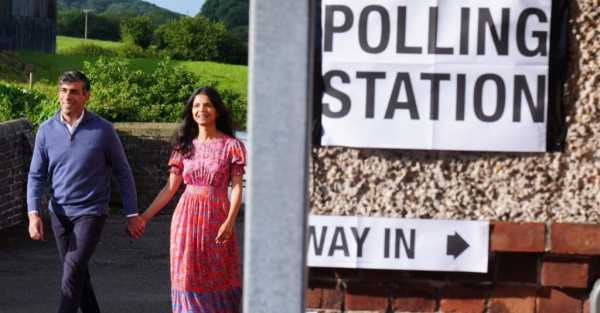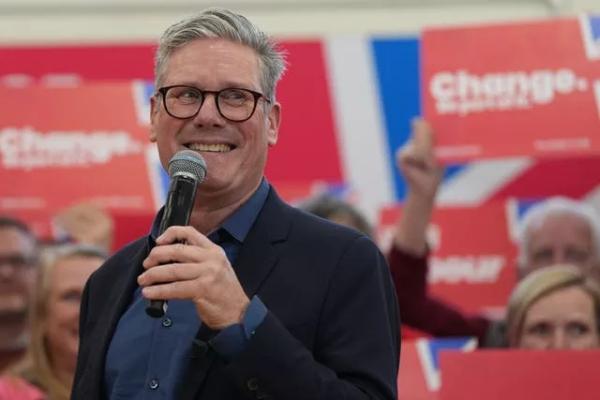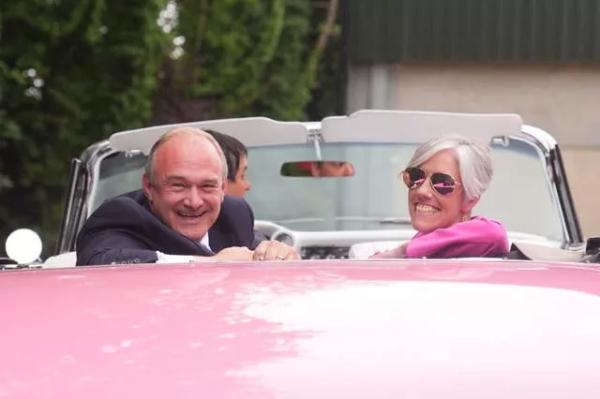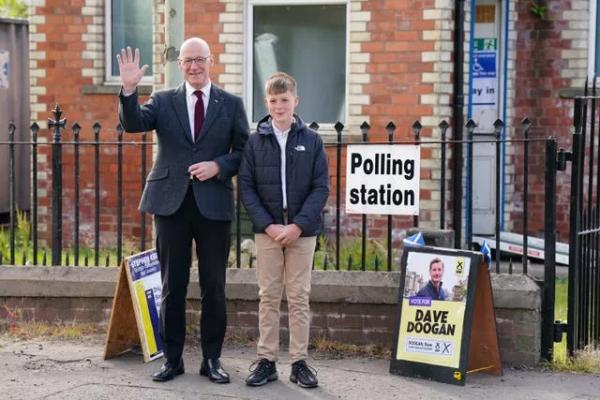
Polling stations across the UK have opened as voters have their say in the country’s general election after weeks of campaigning.
Millions of people will cast their vote between 7am and 10pm, with opinion polls suggesting the opposition Labour Party is on course to secure a big majority in the House of Commons and form a new government.
It is the first election where voters in England, Scotland and Wales will need to show photographic ID before they can receive their ballot paper following a law change in 2022.
An exit poll, published shortly after 10pm on Thursday, will provide the first indication of how the election has gone on a national level.
These take place at polling stations across the country, with tens of thousands of people asked to privately fill in a replica ballot as they leave, to get an indication of how they voted.
The first of the 650 seats are likely to declare their results from 11.30pm.
Party leaders have made their final appeals to voters after touring the country since the election was called.
British prime minister Rishi Sunak said Thursday represents a “pivotal moment” for the country’s future as he claimed Labour would “wield their unchecked power” to increase taxes should they secure a “supermajority”.
Mr Sunak was joined by his wife, Akshata Murty, as they visited a polling station to vote on Thursday.
He said “morning” and waved at reporters as he entered Kirby Sigston Village Hall in Northallerton.
In his final stump speech on Wednesday evening, Mr Sunak said: “This underdog will fight to the final whistle.”

Mr Sunak called on Tory activists to continue campaigning, claiming they had “urgent work to do” to “save the UK” from a Labour government.
Labour leader Keir Starmer said the UK “cannot afford” five more years under the Conservatives, adding Britain can “begin a new chapter” under his party.
He said: “Britain’s future is on the ballot.”
Mr Starmer was also cheered by activists as he spoke at a community centre in Redditch, Worcestershire, as his campaigning came to a close.
He said: “That’s what we are fighting for, let’s continue that fight. If you want change, you have to vote for it.”

As the bookies’ favourite to be the next prime minister, Mr Starmer said he was pleased with Labour’s campaign and his party was “ready for what comes next”.
Ending a campaign that was dominated by headline-catching stunts, Liberal Democrat leader Ed Davey drove off in a pink Cadillac convertible with his deputy Daisy Cooper after his last election campaign stop.
The Lib Dem leader gave a stump speech at Hammond’s End Farm in Harpenden to the tune of ABBA’s Take A Chance On Me.
Mr Davey said he had enjoyed the campaign, which saw him travel the entire length of the UK, cover 6,000 miles on the Lib Dem’s Yellow Hammer One bus and bungee 160 feet.
He added: “Communities are angry. The water companies have been allowed to pour their filthy sewage into our rivers, lakes and onto our beaches. This has to change. The Conservatives have got to go.”
North of the border, Scotland’s First Minister has urged “every single SNP voter” to turn out on Thursday in what he said will be an “incredibly close” contest throughout the country.
Addressing supporters at a pre-election rally in Leith on Wednesday evening, John Swinney said the Conservatives were going to be “heavily defeated” by the Labour Party in England, but there were “narrow margins” between Labour and the SNP north of the border.
Mr Swinney was accompanied by his son Matthew as he cast his vote at Burrelton Village Hall, Perthshire, on Thursday morning.

An average of all polls completed during the seven days to July 3rd puts Labour on 39 per cent, the party’s lowest rating since the campaign began, 18 points ahead of the Conservatives on 21 per cent, followed by Reform on 16 per cent, the Lib Dems on 11 per cent and the Greens on 6 per cent.
The Tories are up slightly on the figures for the previous week while Labour are down, with the averages for the seven days to June 26th being Labour 41 per cent, Conservatives 20 per cent, Reform 16 per cent, Lib Dems 11 per cent and Greens 6 per cent.
On May 22nd, the day Mr Sunak called the election, the seven-day averages stood at Labour 45 per cent, Conservatives 23 per cent, Reform 11 per cent, Lib Dems 9 per cent and Greens 6 per cent.
Sourse: breakingnews.ie